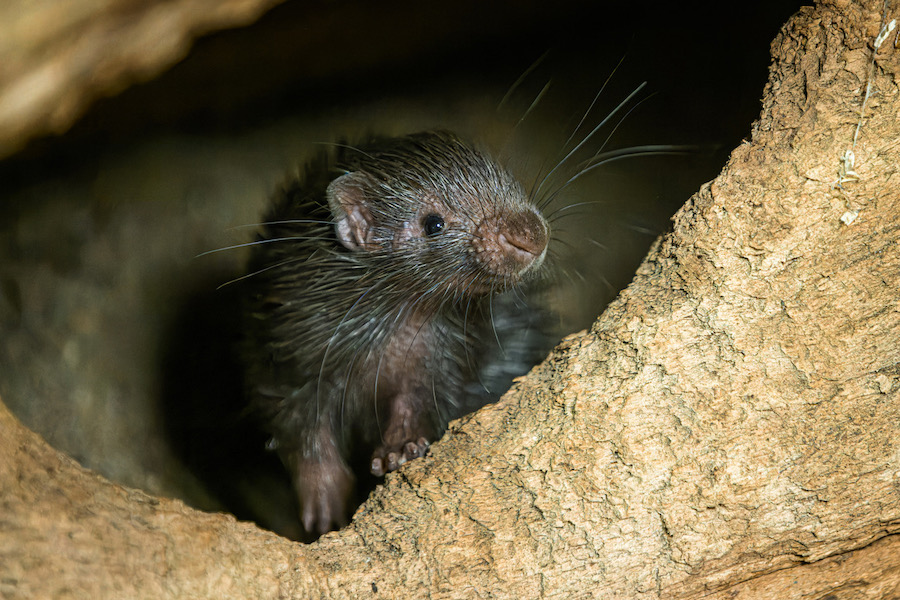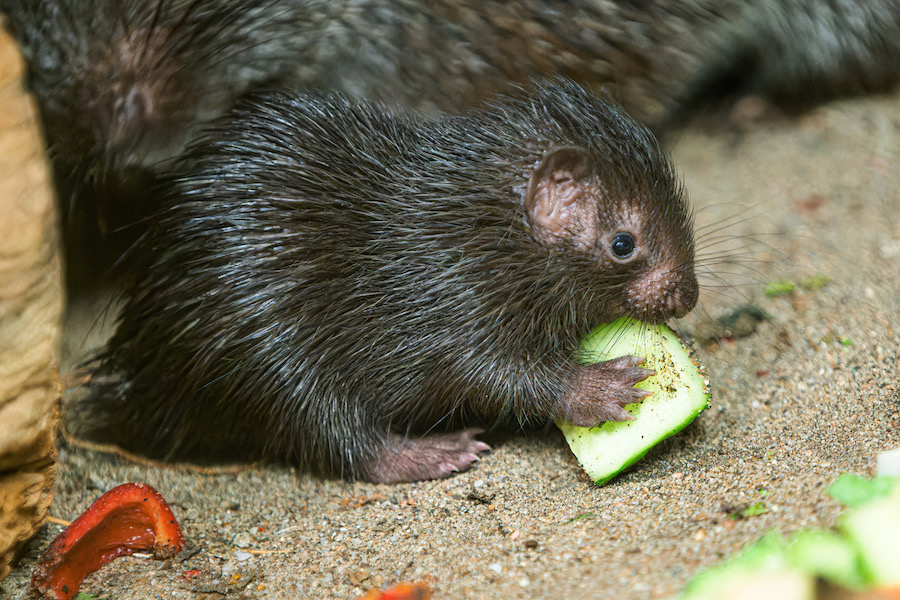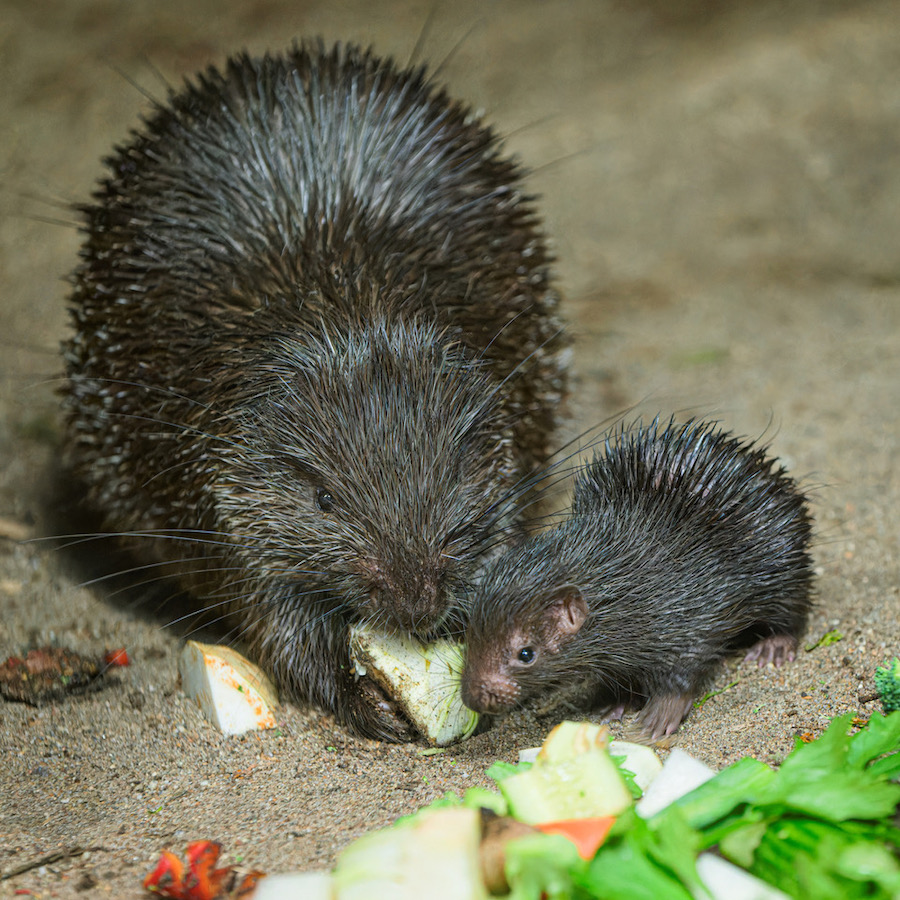
The cub was born on the last day of November and is eager to give birth. Palawan porcupines, unlike other porcupine species, usually give birth to a single young. Photo by Petr Hamerník, Prague Zoo
A baby Palawan porcupine was born at the Prague Zoo. Visitors can comfortably observe the two-week-old addition and both of its parents in the warmth of the Indonesian Jungle Pavilion. The young is valuable for breeding – this endemic of the Philippine island of Palawan is the only species of Old World porcupine that is listed on the Red List of Threatened Species. Hunting and deforestation are behind its declining numbers.
“The birth of a cub is great news also because out of only nine zoos that keep this species in Europe, we are one of two where a cub was born this year. The reason for joy is also the fact that we did not have too high hopes for the birth of another healthy offspring from our older, already deserving female,” says curator of mammals Pavel Brandl.

In addition to mother’s milk, the little porcupine also showed interest in solid food in the form of a varied mixture of vegetables. Photo by Petr Hamerník, Prague Zoo
This is the tenth cub of this species born here since the beginning of breeding in 2015. In addition, all nine previous ones were successfully bred. Later, the Prague porcupines strengthened or even established breeding in other zoos. The current cub also has good prospects – the mother is taking excellent care of him and, according to the breeders, the little rodent has already shown an interest in solid food in addition to sucking his mother’s milk.

Visitors will find the cub near the exit of the Indonesian Jungle Pavilion. The mother and cub stay near the glass near the visitor areas, so these days it is possible to observe them breastfeeding or getting close to each other. Photo by Petr Hamerník, Prague Zoo
The Palawan porcupine inhabits Palawan, Philippines, and several smaller surrounding islands. It is one of the smallest porcupines in the world, adult animals usually do not weigh more than 5 kg. As an island species with limited occurrence and gene pool, it is unfortunately threatened by hunting and loss of natural habitat. Its numbers are decreasing, which is why, according to the IUCN, it is currently classified as vulnerable on the Red List of Threatened Species.

